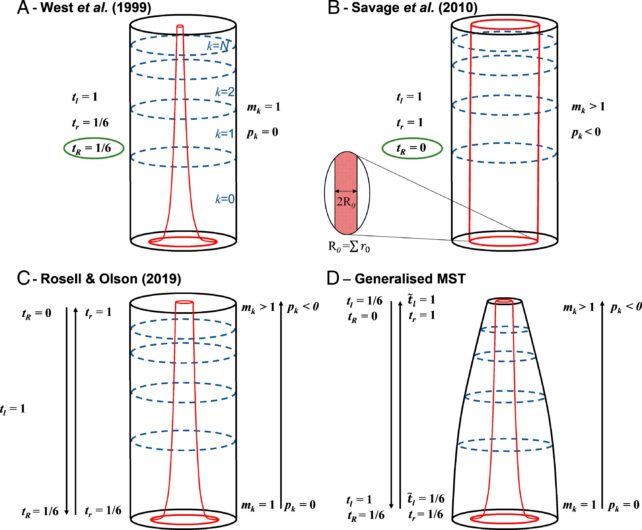For centuries, inventor, scholar, and artist Leonardo da Vinci has been lauded for his precise, well-proportioned drawings and imaginative designs. He grasped gravity's similarity to acceleration a century before Newton, and his artworks were sheer genius in their perspective and geometry.
But on closer inspection, it seems one of the rules da Vinci devised to explain how trees grow doesn't match up with reality in every case.
Sketching trees in his notebooks, da Vinci posited that the thickness of a tree branch, or its trunk, equaled the combined thickness of all the limbs that branched off of it.
That might have been good advice for budding artists. And scientists have since shown that the relationship da Vinci described might explain how trees resist splintering in the wind. But the ratio doesn't hold up on a microscopic level, according to a new study from two plant scientists.
To be fair, da Vinci was looking at the outside of trees, not the inside of towering timbers where water gets sucked up internal tubes called xylem as water evaporates from canopy leaves.
However, the sizing of these conduits relative to the surrounding tree is what Stuart Sopp and Ruben Valbuena, the co-authors of the new paper, were most interested in. They wanted to make sure models of tree growth were proportioned correctly, to better understand trees' susceptibility to drought and contribution to carbon stores.
"Many biological models [of trees] have since taken inspiration from Leonardo's rule to model both plant exterior branching networks and their vascular systems, despite there being little evidence of the rule occurring consistently," the researchers explain in their published paper.
It's not the first time da Vinci's 'Rule of Trees' has been called into question or revised on the basis of modern-day measurements. Just last year, researchers pointed out that the width and length of branches better reflected the branching structure of trees, both slender and stout, rather than thickness alone.
As for trees' internal architecture, well, Sopp and Valbuena reason that a tree's water transport channels can't follow the same ratio set out in Leonardo's rule, narrowing in size the further up the tree, because of fluid mechanics.

Instead, Sopp and Valbuena suggest from their modeling of internal tree hydraulics that vascular channels widen as branches thin towards the tops of trees, to maintain enough force to draw water up the trunk.
Not only that, this growth pattern economizes the amount of carbon used to build an energy-efficient vascular system that moves water and nutrients through the tree, from root to leaf tip.
"One of our aims was to produce a ratio which could be used to estimate tree biomass and carbon in forests," says Sopp, an environmental science graduate student at Bangor University in Wales. "This new ratio will assist in calculating global carbon capture by trees."
The researchers also say their revised model refines a leading theory, called metabolic scaling theory, that predicts how plant height, biomass, diameter, and leaf area scale up with size, and improves our understanding of plant systems as a whole.
"Our re-calculations may also explain why large trees are more susceptible to drought, and may also be at a greater vulnerability to climate change," adds Valbuena, a plant scientist at the Swedish University of Agricultural Sciences.
Judging by the way metabolic scaling theory itself has been debated at length, with many forests deviating from its predictions, we can expect Sopp and Valbuena's model to be scrutinized similarly. But efforts that get us closer to understanding tree vulnerability to drought and other climate extremes are undoubtedly a good thing.
The two researchers hope their findings catalyze further research to obtain data from trees to test their predictions, while they continue to refine their models of plant growth.
The study has been published in PNAS.
